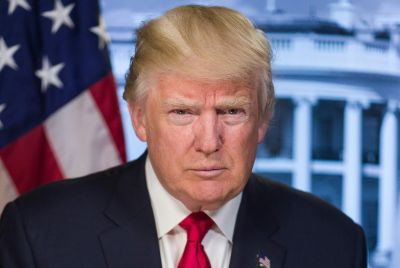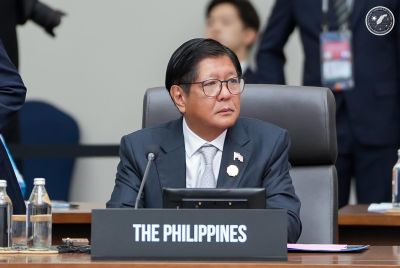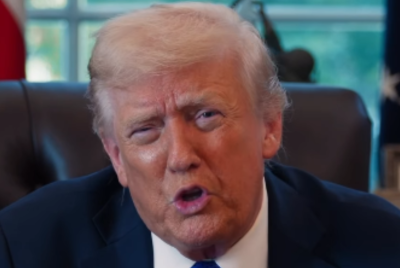What is the 25th Amendment And Could It Remove President Trump From Office? What You Need to Know

The Twenty-Fifth Amendment has erupted into America's political discourse once again, with Illinois Governor JB Pritzker calling for President Donald Trump's removal after the president suggested using Chicago as 'training grounds for our military'.
The extraordinary demand, which Pritzker made on Tuesday whilst comparing Trump to Vladimir Putin, marks the first time a sitting governor has publicly urged invoking the constitutional provision to oust Trump during his second term.
'There is something genuinely wrong with this man, and the 25th Amendment ought to be invoked,' Pritzker declared at a press conference, claiming Trump 'not only has dementia set in, but he's copying tactics of Vladimir Putin'.
The governor's unprecedented call follows Donald Trump's remarks to military leaders that dangerous American cities should serve as proving grounds for troops—comments that sparked immediate backlash from Democratic leaders nationwide.
Born From Tragedy: Kennedy's Death Sparked Constitutional Reform
The amendment emerged from one of America's darkest moments. President John F Kennedy's assassination on 22 November 1963 exposed dangerous gaps in presidential succession procedures, leaving the nation briefly uncertain about the chain of command. Vice President Lyndon Johnson was in the same motorcade, and early, erroneous reports suggested he too had been wounded, creating moments of constitutional chaos.
Congress approved the 25th Amendment on 6 July 1965, and it was ratified by the requisite 38 states on 10 February 1967. The reform addressed a problem that had plagued America since its founding—sixteen times before 1967, the vice presidency had sat vacant due to death, resignation, or succession to the presidency, sometimes for nearly entire four-year terms.
The amendment's first three sections proved relatively uncontroversial. Section 1 codified that the Vice President becomes President upon the death, resignation, or removal of the President. Section 2 established procedures for filling vice-presidential vacancies, famously used when Gerald Ford replaced Spiro Agnew in 1973. Section 3 allows presidents to temporarily transfer power during medical procedures—used multiple times by Ronald Reagan, George W Bush, and Joe Biden without incident.
The Constitutional Nuclear Option: Section 4's Unprecedented Powers
Section 4 remains the amendment's most controversial provision and has never been invoked. It allows the vice president and a majority of the Cabinet to declare the president 'unable to discharge the powers and duties of his office', immediately transferring power to the vice president as acting president.
The process appears straightforward but contains formidable barriers. The president can contest the decision by written declaration. Congress then has 21 days to decide the matter, requiring a two-thirds supermajority in both chambers to keep the president sidelined—a higher threshold than the simple majority needed for impeachment.
Crucially, the amendment's framers deliberately left 'inability' undefined. Was it meant solely for physical incapacity, like strokes or comas? Could it extend to erratic judgement or mental decline? This ambiguity fuels ongoing debates about its appropriate use.
Trump And The Amendment: From Capitol Riots To Military Threats
Trump has attracted more speculation about the 25th Amendment than any modern president. Following the 6 January 2021 Capitol attack, Democrats urged Vice President Mike Pence to invoke the provision. The House even passed a resolution calling for its use by a vote of 223-205, with only one Republican supporting it.
Pence refused, arguing in a letter to House Speaker Nancy Pelosi that using the amendment would 'set a terrible precedent' and that it should be reserved for cases of medical or mental incapacitation, not as 'a means of punishment or usurpation'. He warned against actions that would 'further divide and inflame the passions of the moment'.
Now, Trump faces fresh calls for his removal. Beyond Pritzker's dramatic intervention, media personality Whoopi Goldberg suggested invoking the amendment following Trump's September address to the United Nations, where he complained about broken teleprompters and escalators. 'Well, they questioned Biden's competence. If Biden had acted like this, I would have said, "Yeah, take him",' Goldberg declared on The View.
Political Arithmetic Makes Removal Virtually Impossible
Despite escalating rhetoric, the mathematical and political realities make Trump's removal via the 25th Amendment essentially impossible. Without the vice president's participation, the process cannot even begin—and there's no indication Vice President JD Vance would consider such action against the president who selected him.
Even if Vance and a Cabinet majority acted, securing two-thirds votes in both chambers of a polarised Congress would require unprecedented bipartisan cooperation. The provision was designed for clear-cut medical emergencies, not political disagreements, making its use for behavioural concerns constitutionally dubious.
Historical precedent underscores this difficulty. The Reagan administration came closest to invoking Section 4 after the president was shot in 1981, preparing necessary papers that were never signed. In 1987, some staff members suggested using it when Reagan appeared inattentive and distracted, but his new chief of staff, Howard Baker, determined he was competent.
The Amendment's Double-Edged Legacy
The 25th Amendment represents both the strengths and limitations of American democracy. It provides clear procedures for genuine presidential incapacity whilst erecting substantial barriers against political manipulation. Yet its very existence tempts frustrated opponents to invoke it as a solution to political problems it was never designed to solve.
Trump himself has weaponised these tensions, warning cryptically that 'the 25th Amendment is of zero risk to me, but will come back to haunt Joe Biden and the Biden administration'. Such threats underscore how the provision has evolved into a political tool rather than a constitutional safeguard.
As calls for its use multiply from governors' mansions to television studios, the amendment remains what its framers intended—an emergency measure for extreme circumstances, not a remedy for political disagreements. Its high threshold ensures that removing a president requires an overwhelming consensus, protecting the office from partisan weaponisation whilst preserving democracy's ultimate safety valve.
For now, the 25th Amendment stands as America's constitutional insurance policy—rarely discussed until crisis strikes, impossible to use without extraordinary cause, yet essential to the republic's continuity. Whether Trump's latest controversies meet that extraordinary threshold remains a question that divides the nation as sharply as the president himself.
© Copyright IBTimes 2025. All rights reserved.




















